Kanlı Divane Ruins is an archaeological site containing the ruins of the ancient settlement of Kanytella, which was located in the Cilicia Trakheia (Mountainous Cilicia) region in the Ancient Period. Today, it is located 3 kilometers north of Kumkuyu (Yemişkumu) Neighborhood in the Erdemli district of Mersin province, approximately 50 kilometers from Mersin city center. The settlement developed around a large natural sinkhole, around which it is situated.
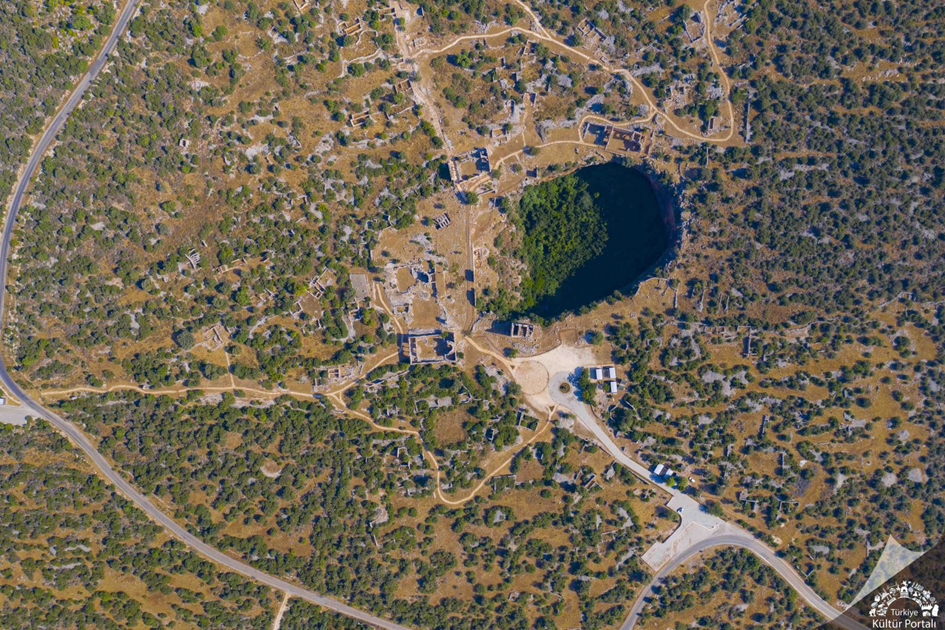
Kanlı Divane Ruins (Turkiye Culture Portal)
Historical Process
According to archaeological and epigraphic data, settlement in Kanytella dates back to the 3rd century BC, i.e., the Hellenistic Period. The settlement continued to develop throughout the Roman and Late Antique Periods and was inhabited until the 7th century AD. As of the 15th century, Turkmen tribes started to settle in the region. The ruins and architectural features reflect the influences of the Hellenistic, Roman, and Byzantine periods.
Geographical Feature and Obruk Structure
The ancient city is built around a large sinkhole with a depth of 50 meters, a length of 142 meters, a width of 95 meters, and a surface area of approximately 12,000 m², formed by the collapse of the ceiling. This geological formation constitutes the core of the settlement.
Views on Naming
There are various opinions on the origin of the name "Kanlı Divane". While some sources state that the name originated from the reddish tones of the rocks, folklore suggests that criminals were punished by being thrown into the sinkhole, hence the name "bloody". The word "divane" may be derived from the word "divan" meaning the area where Turkmen tribes held meetings.
Prominent Buildings and Ruins
Hellenistic Tower
The tower, the oldest structure of the ancient settlement, lies to the southwest of the sinkhole. The inscription on the exterior of the rectangular structure with three rooms indicates that it was built by the priest-king Teukros in the name of Zeus Olbios in the early 2nd century BC.
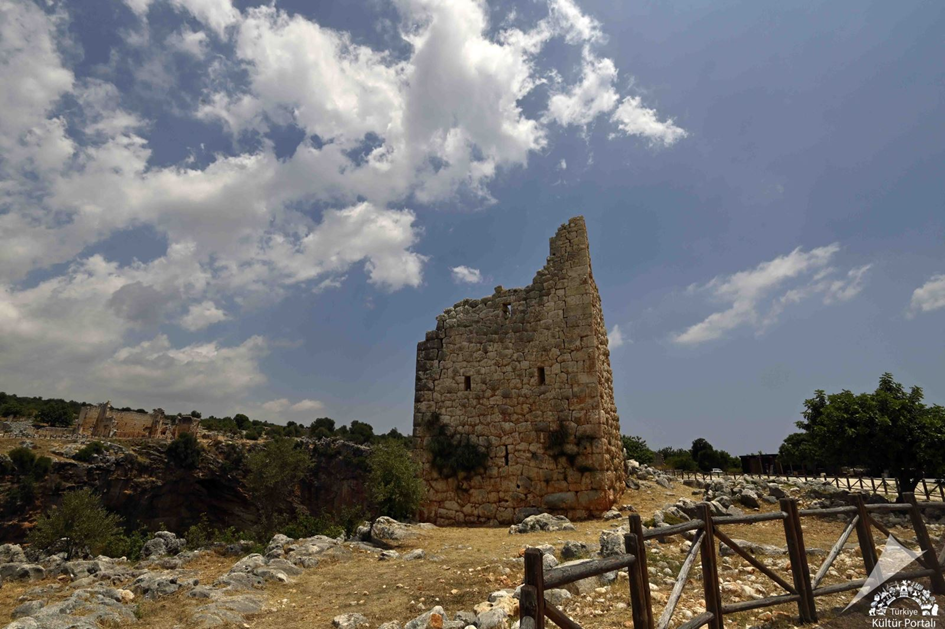
Hellenistic Tower (Turkiye Culture Portal)
Reliefs
Relief of the Armaronzas Family: This relief from the 1st century AD depicts six figures of individuals, and the inscription states that anyone who damages the statues will pay a fine of 1000 drachmas to Zeus.

Armaronzas Family Relief (MüzekartOfficialWebsite)
Soldier Relief: This relief of a soldier named "Trogomon" is on the north façade, and it seems that the inscription was dictated by his mother.
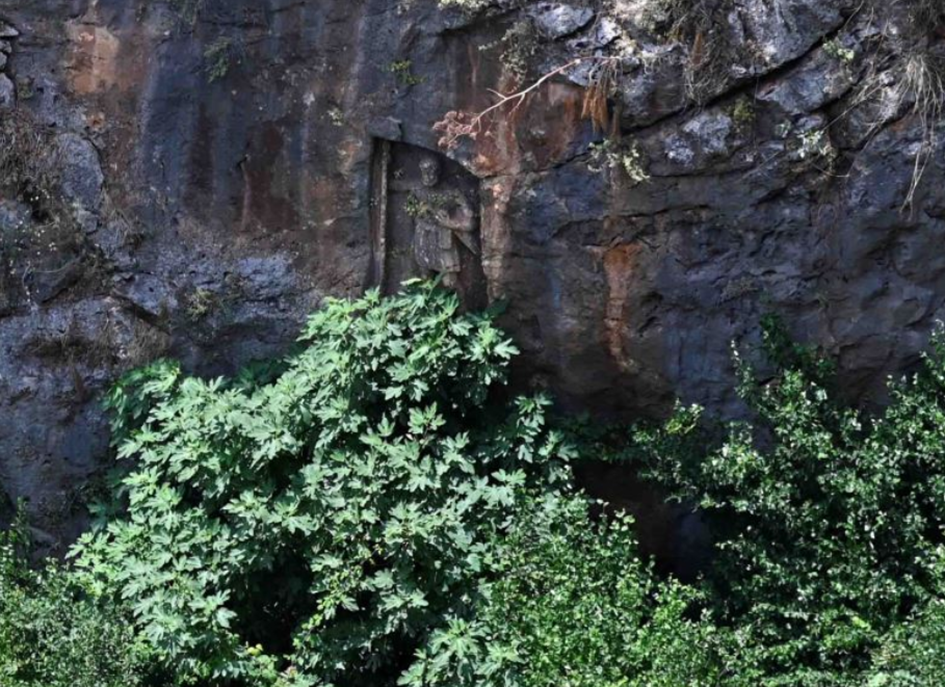
Soldier Relief (Turkiye Culture Portal)
Çanakçı Rock Tombs: The relief of a woman in mourning stands out among the depictions in the rock tombs 1 km southwest of the margin. They are dated between the 1st BC - 1st AD centuries.

Çanakçı Rock Tombs (Turkiye Culture Portal)
Mausoleums
Aba's Tomb
It has a Roman temple-type plan and was built by a woman named Aba for her husband Arios and their children. The monumental inscription states that the tomb belonged exclusively to her family and that high penalties were stipulated in case of violation. The building is dated to the 2nd century AD.
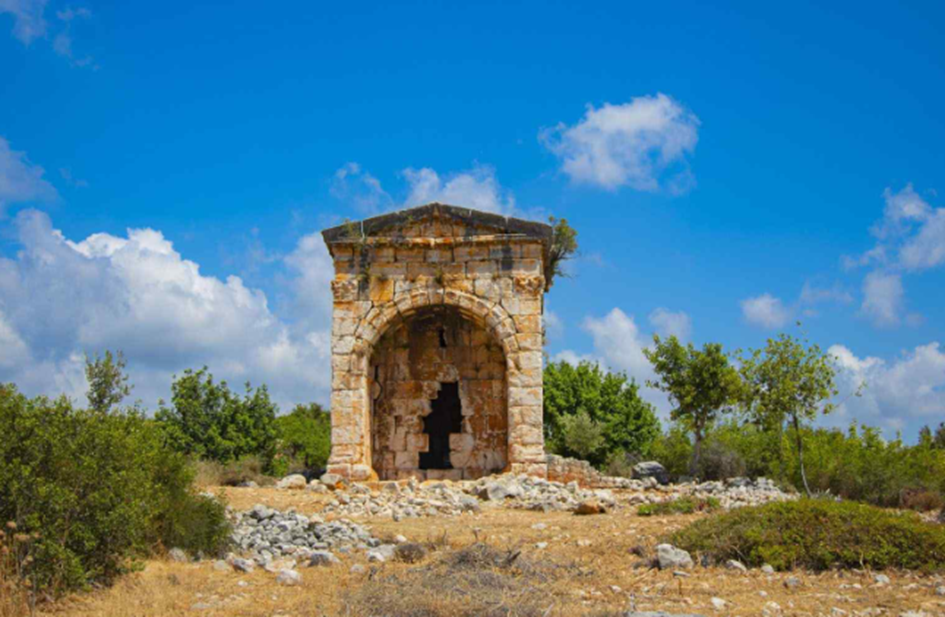
Aba'sTomb (Turkish Museums)
Three Feet Tomb Monument
Dating from the second quarter of the 3rd century AD, this tomb is architecturally unique. It stands out with its vaulted cell and three-columned façade. It is the only known example in the region in terms of its architectural form.
Religious Buildings and Urban Fabric
Churches
The remains of four churches located around the sinkhole were identified in the settlement. There is also a fifth church with a visible apse and a newly discovered chapel. Most of these buildings date to Late Antiquity and share common features with Syrian-Byzantine architecture. Their plan schemes, galleries, and decorated capitals date to the 5th and 6th centuries.
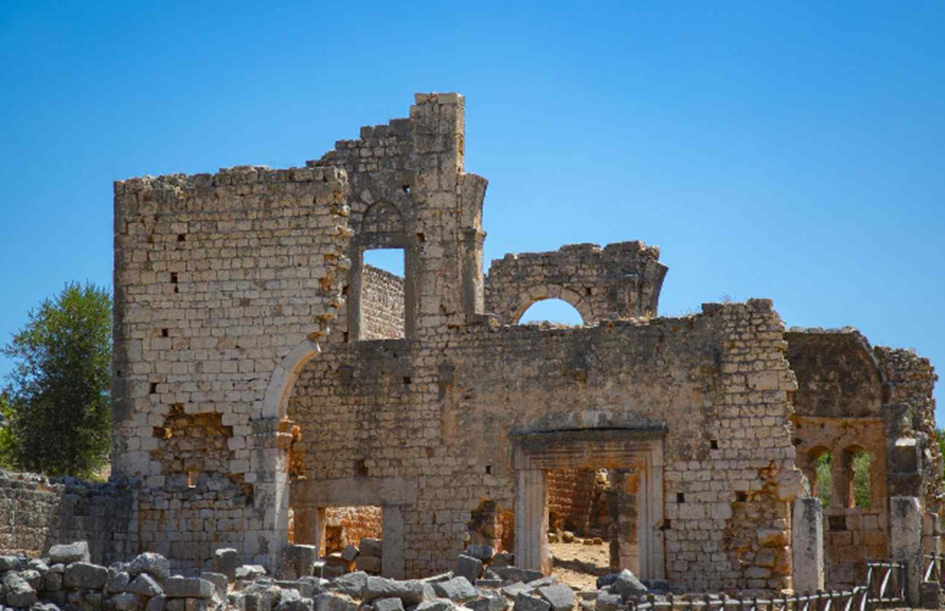
Church (Turkish Museums)
Civil Buildings
It is understood that the area was equipped with olive processing workshops, numerous cisterns, and water systems. Its connection to the ancient port of Akkale indicates that the city was also a center of production and trade. These features make Kanlı Divane stand out not only as a religious center but also as a focal point of regional economic activities.
Archaeological Findings and Current Situation
The polygonal walls unearthed during the excavations suggest that the area was a fortress during the Hellenistic Period. In the necropolis area of the settlement, sarcophagi and Turkmen tombstones belonging to both the Ancient Period and the following centuries were found. This indicates an uninterrupted cultural continuity in the area.


